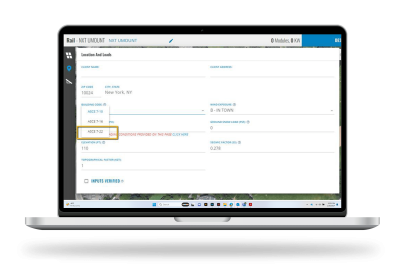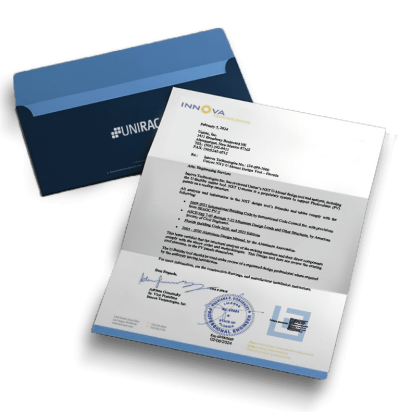ASCE 7-22 Integration: Keeping You Ahead of the Curve
SHARE THIS:


The ASCE 7-22 Standard: What’s New?
The ASCE 7-22 standard brings several important changes to the world of solar construction. It addresses critical structural-safety aspects such as snow loads, wind loads, seismic loads, and even tornado loads. While some AHJs are still catching up, Unirac recognizes the importance of staying ahead to ensure the safety and reliability of your solar projects.
Proactive Integration Into U-Builder
Unirac’s commitment to excellence drives us to anticipate the needs of our customers. That’s why we’ve taken the initiative to incorporate the ASCE 7-22 standard into our U-Builder design tool. By doing so, we empower solar professionals to design systems that align with the Code standards, even before they are widely adopted by AHJs.
State Certification Letters for Plan Set Submittals
Understanding that AHJs may require documentation demonstrating compliance with the ASCE 7-22 standard, Unirac has ratified state certification letters for ASCE 7-22 plan set submittals. This invaluable service simplifies the permitting process by assuring authorities that your solar project adheres to the latest industry standards.
Seven Systems Now Certified: Our Goal is Your Peace of Mind
At Unirac, we believe that safety should never be compromised. That’s why we have begun incorporating the ASCE 7-22 design criteria into our solar-racking products. We have started this process with seven of our systems including SolarMount® and NXT UMOUNT ® and will soon have a total of nine systems certified (GFT and ULA coming soon). These products have been certified to the updated requirements of ASCE 7-22, ensuring that your solar installations remain durable, dependable, and up to code.
Unirac has always provided high-quality, innovative solutions for solar professionals. Our proactive integration of the ASCE 7-22 standard into U-builder, coupled with state certification letters for plan set submittals, demonstrates our unwavering commitment to safety and compliance. By incorporating this standard into all our systems, we aim to provide solar professionals with the tools and products they need to thrive in an ever-changing industry.
As you embark on your solar projects, rely on Unirac to serve as your steadfast partner in guaranteeing unparalleled safety and reliability. With ASCE 7-22 integrated solutions, you can build with confidence, knowing that you are at the forefront of industry standards. Together, we are creating a brighter, safer, and more sustainable future through solar energy.

Overview of ASCE 7-22 Code Changes: Minimal Cost Impact Expected for Projects
Snow Loads:
- The way we calculate ground snow loads for specific locations has changed. We now use a different statistical measurement method and consider data from the past three decades.
- There’s a change in how we factor in reliability for snow-load combinations.
- Roof load values have been adjusted, with an average increase of 12% for most sites.
- The snow importance factor has been eliminated, focusing on reliability values for different risk categories.
- Snow drift calculations have been updated.
Seismic Loads:
- Spectral calculations have been simplified, and factors Fa and Fv have been removed for certain situations.
- We now use a multi-period response spectrum instead of a two-period one.
- Three new site classes have been added based on how seismic waves travel through the ground.
- The equation for loads on non-structural members (Fp) has been refined for accuracy.
Wind Loads:
- Wind speed maps have been revised, especially in hurricane-prone regions.
- The pressure coefficients (GCp) for Components and Cladding have been changed.
- There’s a new approach for calculating the effect of wind direction (Kd) on design wind pressures in structural elements.
- A new section has been added to determine wind loads on ground-mounted fixed-tilt solar systems.
Tornado Loads:
- ASCE 7-22 introduces new guidelines to account for the impact of tornadoes. These rules are applicable to structures in risk categories III and IV.

